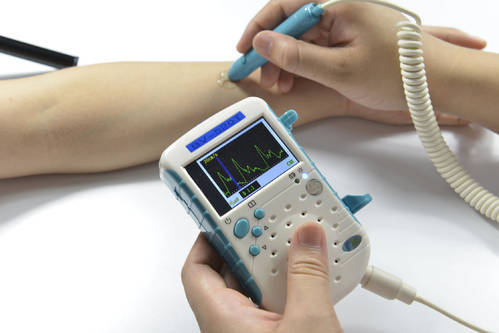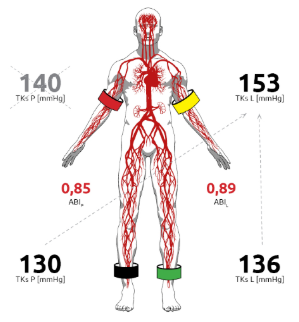The measurement of the ABI index (ankle-brachial index) is an important and painless examination in vascular medicine, which informs about the state of blood supply of lower limbs by arteries.
The examination is performed with a pressure cuff and a portable ultrasound device (doppler). The ABI / TBI index is calculated from the ratio of pressure on the lower and upper limb. Using the ABI index, we determine the severity of possible lower limb blood flow restriction and also we can monitor the effectiveness aftre treatment. In patients with diabetes mellitus, the arteries are often affected by medicalcinosis. This happens when a lot of calcium is stored in the vessel wall and the vessels are incompressible. Therefore, in patients with diabetes, we perforn the TBI index – toe-brachial index.
The examination should be performed
- in patients with lower limb pain while walking
- in patients with suspected lower blood flow to the lower extremities
- in patients with known peripheral artery occlusive disease (PAOD) at regular check-up




